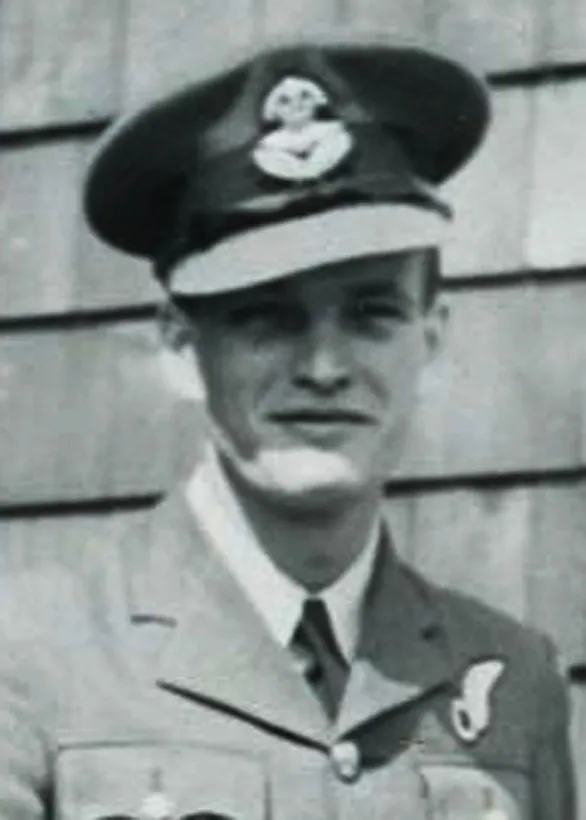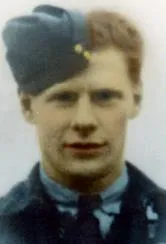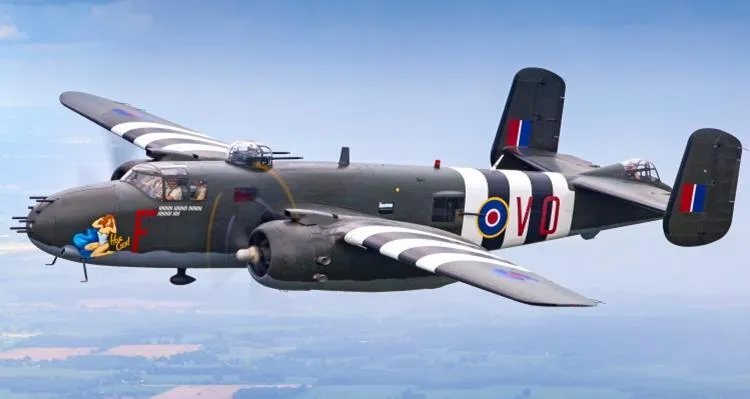On 29 April 1941 Ian reported to Saskatoon for a medical and left the same day for the new No. 2A Temporary Manning Depot at Penhold, Alberta; it would later become No. 36 Service Flying Training School (SFTS), where Ian would spend the month of June on Guard duty before proceeding to No. 4 Initial Training School at Edmonton, Alberta. No. 8 Bombing & Gunnery School in Lethbridge, Alberta was next (after which he married Doris Meville on 30 Jan 42). He completed his training at No. 1 Central Navigation School in Rivers Manitoba and shortly thereafter shipped out to Britain.
Flying Officer Ian Tweddell, Navigator/Bombardier, RCAF was among the first group of officers to report to 98 Squadron RAF at West Raynham, Norfolk on 14 Sep 42 just two days after it had been reformed following its exemplary WWI service.
1943 started with terrible weather, many lectures, some flying training, and air firing practice until 22 January; 98 Squadron's first operation of WWII, as well as for Ian and crewmates:
- Flight Sergeant Calder, Gordon A. Pilot (RCAF)
- Flying Officer Tweddell, Ian W. Nav/B (RCAF)
- Sergeant Gale, John Wireless Operator/Air Gunner (RAF)
- Sergeant Gower, Frank P. Air Gunner (RAFVR)
The aircraft Ian and crew manned that day, Mitchell FL176, would later become known as 'Grumpy' the holder of the record number of operations for Mitchells in the RAF (125); they were Grumpy's first crew.
Activity for January through April was Air Sea Rescue searches, 'Exercise Spartan' (RAF/Army cooperation tests that resulted in formation of 2nd Tactical Air Force), training and testing of gun turrets. On a 13 May operation; the 98 Squadron Operations Records Book (ORB) recorded: "Six aircraft were detailed to carry out operations. Bomb load for each aircraft was 4 x 1,000lb. Aircraft took off at 10.30 hrs, returning 12.50 hours. The aircraft bombed Boulogne Marshalling yards. Five aircraft returned safely to base. Pilot Officer Calder and crew failed to return in FL197. Crew presumed safe. Fighters reported four parachutes descending over sea near Hardelot, France."
Ian's Mitchell FL197 had been set aflame by flak; the covering fighter pilots were optimistic in their reporting. Pilot Officer Gordon Calder and Sergeant Frank Gower were KIA and are interred in Boulogne Eastern Cemetery. Flying Officer Ian Tweddell and Sergeant John Gale became prisoners of war; Tweddell in Stalag Luft III for commissioned officers at Sagan and Belaria, Gale in Stalag Luft VI for non-commissioned officers at Heydekrug.
Ian endured the enforced march between 28 Jan and 28 Apr 45 as German guards herded their Stalag Luft III charges away from the rapidly advancing Russian Army; it ended with liberation by US Army Forces after which the RAF flew Ian and fellow 'kreigies' back to England. David Poissant, 2nd Tactical Air Force Medium Bombers Assn
![]() Ian's long march journal and details Ian Tweddell RCAF (Nav/B 98)
Ian's long march journal and details Ian Tweddell RCAF (Nav/B 98)



